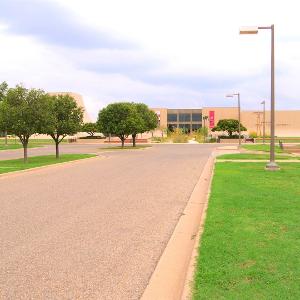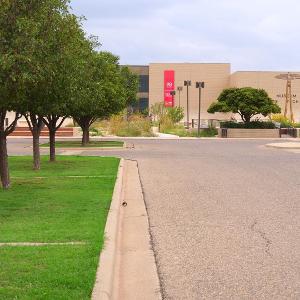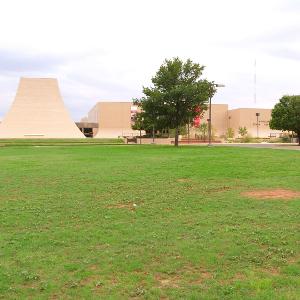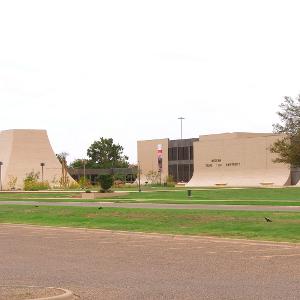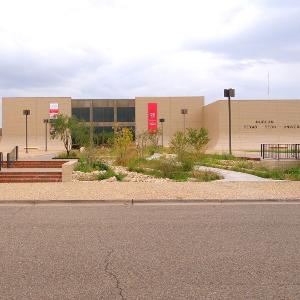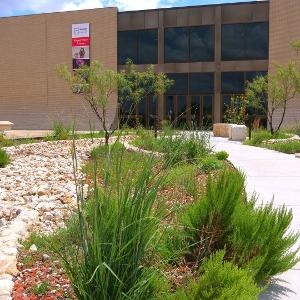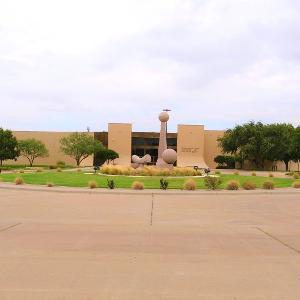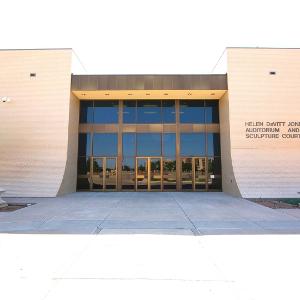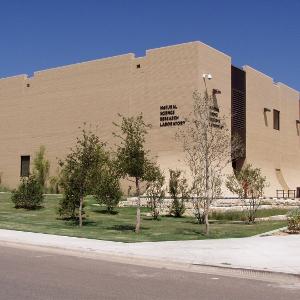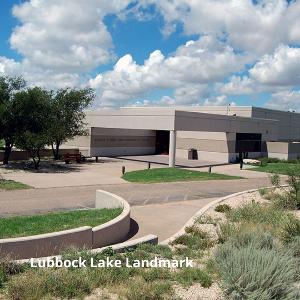About the Museum
The Museum of Texas Tech University is a diverse and multifaceted cultural resource with six collecting divisions and 8.8 million objects. Collections are comprised of Anthropology, Art, Clothing and Textiles, History, Paleontology, and Natural History. The Museum features nine permanent galleries ranging from 20th and 21st century art and southwest Indian art to the study of Biodiversity and the Ice Age to a diverse collection of dinosaurs to history. An additional seven galleries offer a mixture of exhibitions curated from the Museum's collections and travelling exhibits from around the world.
The Museum was founded in 1929 as the West Texas Museum, just four years after the creation of what was then known as Texas Technological College (later changed to Texas Tech University). The Museum was built on Texas Tech University's campus near Memorial Circle where nationally known painter Peter Hurd was selected to paint a 1,300 square foot mural in the Museum's rotunda. In April of 1953 the Museum purchased the first Spitz Planetarium. At the 35th Annual Meeting of the West Texas Museum Association on November 5, 1964, plans were revealed for contruction of a new museum complex on a several acre tract at Fourth Street and Indiana Avenue. Six years later on November 14, 1970, the Museum opened at it's new and current location.
The Moody Planetarium was renamed as such by the Moody Foundation in 1970 when the new Museum was built. Located inside the Museum of Texas Tech University, the planetarium offers an equal balance of education and entertainment with a wide range of shows from the study of stars and constellations to dark matter and black holes, to in depth looks at the sun, moon, and solar systems. With over 40 shows to choose from there is something to suit all interests and all ages. If you are looking for a truly immersive experience and love music, the planetarium offers laser shows. Enjoy rocking out to Pink Floyd, Michael Jackson, Metallica, popular country artists and many more while immersed in a laser experience choreographed to the music. The planetarium seats 74 including two wheelchair access seats. Ticket pricing varies from $3 to $5 and offers season/group passes.
The Natural Science Research Laboratory (NSRL) housed within the Museum holds 5.5 million objects and specimens, making it the largest Natural History Collection in Texas. Collections include Mammals, Birds, Invertebrate Zoology, and Genetic Resources Collections. These collections are available to researchers at academic, scientific, and government institutions around the world for scientific investigation, discovery and problem-solving in the natural sciences.
The Lubbock Lake Landmark is a division of the Museum of Texas Tech University, the Lubbock Lake Landmark is an archaeological and natural history preserve and dig site at the northern edge of the city of Lubbock, Texas. The Landmark contains evidence of 12,000 years of occupation by ancient peoples on the Southern High Plains. The Landmark offers exhibitions exploring animals and culture a range of public programs. The Landmark has a variety of hiking trails totaling 4.5 miles you can experience at your own pace. Enjoy a nature trail (2.5-3.5 miles) while observing animals and vegetation across the changing landscape, hike our beautiful wildflower trail (.5 miles) that identifies many native plants, trees, and wildflowers, and be amazed by the archaeological trail (.5 miles) where 12,000 years of history has been discovered and continues to be an active dig site and educational component to the Heritage and Museum Sciences Master's Degree program. The Landmark welcomes visitors of all ages year round.
The Museum is was accredited by the American Alliance of Museums 1990. Only 3% of the nation's nearly 35,000 museums hold this accreditation. The Museum has been reaccredited in 1998, 2008, and most recently in 2020.
The Museum is a member of Blue Star Museums and the Green Museums Initiative.
The Museum is committed to serving our diverse community, through a range of exhibitions and public programming. The Museum is a non-profit institution with free admission.
Museum of Texas Tech University
-
Address
3301 4th Street, Lubbock, TX 79415 -
Phone
806.742.2490 -
Email
museum.texastech@ttu.edu

